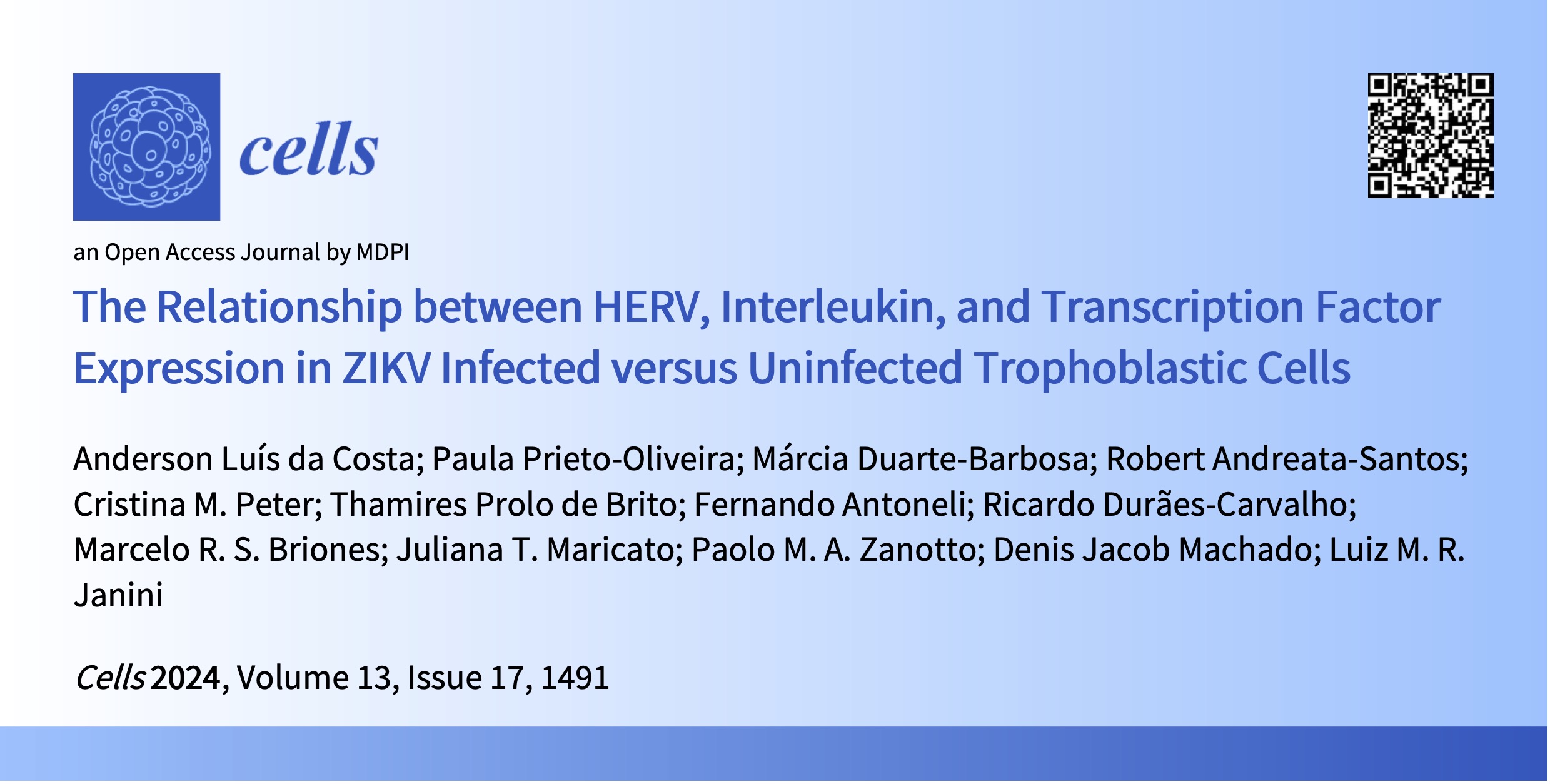Unveiling the Early Impact of ZIKV on Placental Cells
Unveiling the Early Impact of ZIKV on Placental Cells: A Collaborative Study Across Continents
We are thrilled to announce the publication of our latest study, “The Relationship between HERV, Interleukin, and Transcription Factor Expression in ZIKV Infected versus Uninfected Trophoblastic Cells,” in Cells. This international collaboration brings together experts from prestigious institutions in Brazil and the United States to explore the complex interplay between Zika virus (ZIKV) infection and key host defense genes in the placenta.

Understanding ZIKV’s Early Impact on Trophoblastic Cells
ZIKV is notorious for its severe effects on pregnancy, particularly in regions like Brazil, which saw a surge in Congenital ZIKV Syndrome (CZS) cases during recent outbreaks. Our study focuses on the early stages of ZIKV infection in two trophoblastic cell lines (BeWo and HTR-8) using ZIKV strains MR766 (African) and IEC-Paraíba (Asian-Brazilian).
Key Findings
-
Early Infection Dynamics: Our results suggest that ZIKV infection at early time points (24–72 hours) does not significantly alter the expression of selected human endogenous retroviruses (HERVs), interleukins, and transcription factors in these trophoblastic cells.
-
Independent Gene Linkages: Interestingly, even without ZIKV infection, some host defense genes appear to be intrinsically linked, independent of viral presence. This highlights the complexity of the placenta’s immune environment and underscores the need for more in-depth research.
Future Directions and Implications
While this study provides a snapshot of early infection, we acknowledge the need for extended investigations. Future research should include additional trophoblastic cell lines, longer infection timelines, and advanced viral kinetics analyses to fully capture the potential strain-specific impacts on gene expression. We anticipate that longer ZIKV exposure will likely trigger differential expression of critical genes essential for placental development and function.
Looking Ahead
Our work opens a window into the initial stages of ZIKV infection in the placenta, but there is still much to explore. By extending our research to incorporate more cell types, longer infection durations, and additional host defense genes, we aim to build a more comprehensive understanding of how ZIKV interacts with the placenta and affects fetal development.
Stay tuned for more updates as we continue to unravel the complexities of ZIKV infection and its implications for maternal and fetal health!
A Collaborative Effort Across Borders
This research was made possible by the combined efforts of scientists from the Federal University of São Paulo, the University of São Paulo, and the University of North Carolina at Charlotte. By leveraging the expertise of virologists, bioinformaticians, and molecular biologists, our team offers new insights into the early immune responses of placental cells to ZIKV infection.
Collaborating Institutions
- Laboratory of Retrovirology, Federal University of São Paulo, Brazil
- Department of Bioinformatics and Genomics, University of North Carolina at Charlotte, USA
- Computational Intelligence to Predict Health and Environmental Risks Center, UNC Charlotte, USA
- Center for Medical Bioinformatics, Federal University of São Paulo, Brazil
- Laboratory of Molecular Evolution and Bioinformatics, University of São Paulo, Brazil
Citation
Costa, A.L.d.; Prieto-Oliveira, P.; Duarte-Barbosa, M.; Andreata-Santos, R.; Peter, C.M.; Prolo de Brito, T.; Antoneli, F.; Durães-Carvalho, R.; Briones, M.R.S.; Maricato, J.T.; et al. The Relationship between HERV, Interleukin, and Transcription Factor Expression in ZIKV Infected versus Uninfected Trophoblastic Cells. Cells 2024, 13, 1491. https://doi.org/10.3390/cells13171491
Previous post
Denis was elected communications officer of the Latinx/Hispanic Staff/Faculty Caucus
Next post
Phyloinformatics Lab at the 2024 Biomedical Sciences Symposium
